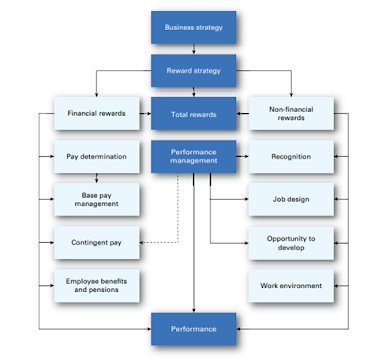Performance Management and Rewards

Performance Management, if done properly, can benefit individuals through feedback, providing opportunities for achievement, the scope for skill development, and guidance on career paths (Armstrong and Taylor, 2014). And also deals with salaries by generating information needed to determine salary or bonuses related to performance, skills, or contributions (Armstrong, 2009). A reward system is a process of awarding tangible and intangible returns to the employee based on their performance but all type of returns is not directly based on employee performance (Aguinis, 2013). When rewards are involved, it means that a performance management system is likely to be taken very seriously by both the appraiser and the appraisee. It ensures that it affects the person assessing the institution and their compensation (Lawler, 2003). Some organizations separate performance pay ratings from performance management reviews. There will be reading from performance management review to payroll r...



